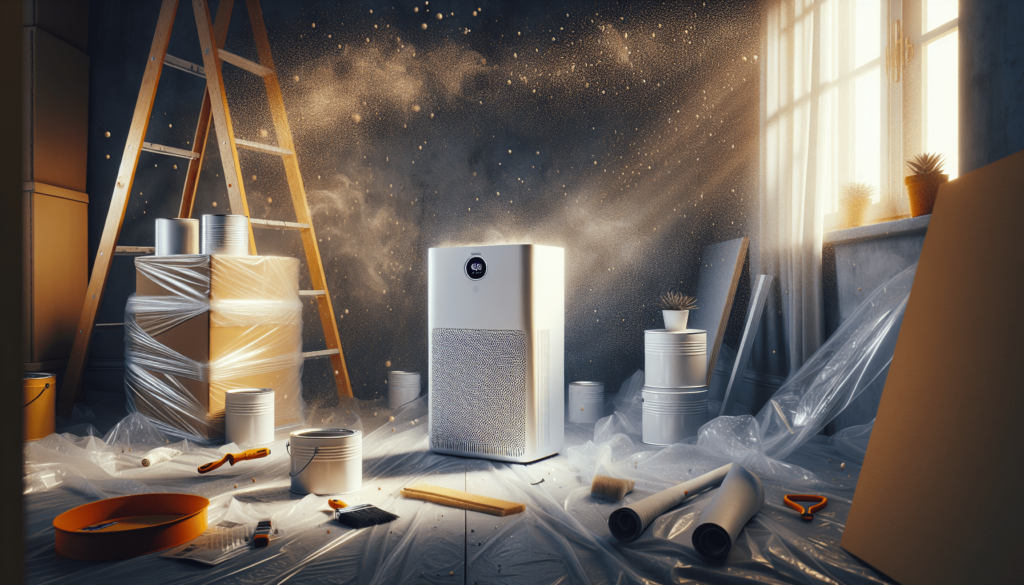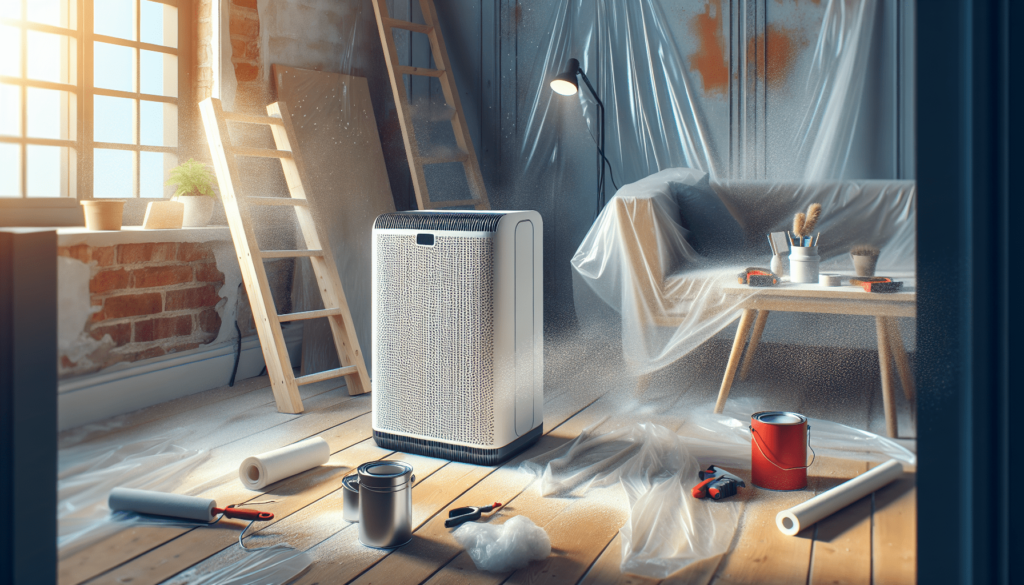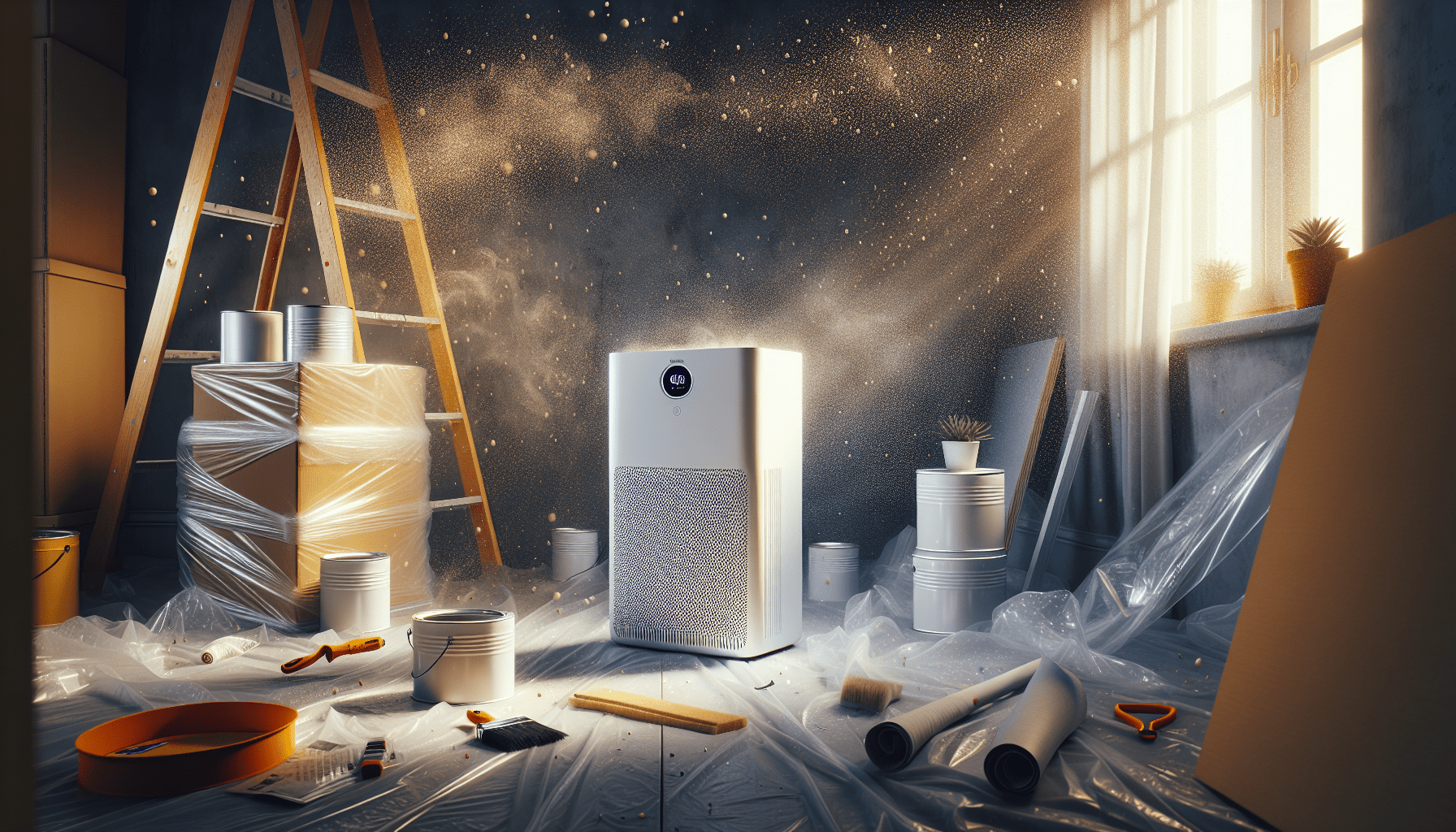Have you ever started a home renovation project only to find yourself sneezing, coughing, or suffering from watery eyes? Home renovations, while exciting, can unfortunately release a plethora of allergens into your living space. But don’t worry, there are ways you can minimize these allergens and keep your home as comfortable as possible.

Understanding Common Allergens
Before diving into effective strategies, it’s crucial to understand the common allergens that you’re likely to encounter.
Dust Mites
Dust mites thrive in household dust and can become a real nuisance during renovations. These microscopic creatures can trigger asthma and allergic reactions.
Mold
Mold can grow in damp and hidden places like behind wallpaper or under floors. Disturbing these areas during a renovation can release mold spores into the air, affecting indoor air quality.
Pet Dander
If you have pets, their dander can settle in carpets, curtains, and upholstery. Renovation activities can stir up these allergens too.
Pollen
Outdoor allergens like pollen can easily make their way inside, especially if windows and doors are left open during construction.
Chemical Fumes
Materials such as paint, adhesives, and cleaners can give off volatile organic compounds (VOCs) that might irritate your lungs and skin.
Pre-Renovation Planning
Proper planning can make a huge difference in minimizing allergens during your renovation project.
Opt for Low-VOC Materials
Choose low-VOC paints, adhesives, and finishes to reduce the amount of harmful chemicals released into the air. Many brands now offer eco-friendly options that are less likely to cause allergic reactions.
Create a Detailed Renovation Schedule
Planning can reduce the chaos and ensure that the project moves swiftly. The less time you spend renovating, the fewer allergens will be stirred up.
| Task | Description |
|---|---|
| Assessment | Inspect the area to identify potentially hazardous materials like asbestos, lead paint, or hidden mold. |
| Material Selection | Choose hypoallergenic and low-VOC products. |
| Timeline | Establish a detailed timeline to complete each phase of the renovation promptly. |
Safeguarding the Renovation Area
Once the planning is in place, it’s time to prepare the renovation site to minimize the spread of allergens.
Contain the Area
Use plastic sheeting and tape to seal off the renovation area from the rest of your home. This can help prevent dust, mold spores, and other particulates from traveling through your living spaces.
Ventilation
Ensure proper ventilation by using exhaust fans or air purifiers. Open windows only when necessary, as outside allergens like pollen can enter.
Clean Frequently
Make cleaning a regular part of your renovation process. Use a vacuum with a HEPA filter to clean up dust and debris. Wet mopping can also help to reduce airborne particulates.
Protecting Yourself and Your Family
Your health and safety are paramount during any renovation project. Here’s how to minimize your exposure to allergens.
Personal Protective Equipment
Equip yourself with safety gear, including masks, gloves, and goggles. N95 respirators are particularly effective for filtering out dust and mold spores.
Limit Exposure
If possible, avoid spending time in the renovation area. Consider temporary relocation if major work is being done. Keep pets and children away from the worksite to further reduce exposure.
Regular Breaks
Taking regular breaks will not only reduce your exposure to allergens but also give you a chance to rest and stay hydrated.

Handling Specific Renovation Activities
Different activities during renovations can stir up various allergens. Understanding how to manage each one can make a big difference.
Demolition
Demolition activities can release large amounts of dust and debris into the air. Wetting surfaces before tearing them down can help minimize dust. Additionally, removing waste promptly will reduce exposure to allergens.
Painting
Using low-VOC or zero-VOC paints can significantly reduce harmful fume exposure. Ensure proper ventilation when painting by using an exhaust fan and keeping windows open when possible.
Flooring
When installing new flooring, choose hypoallergenic options such as tile, hardwood, or linoleum. Carpets can trap allergens, so opt for alternatives that are easier to clean and do not harbor dust mites or pet dander.
Plumbing and Electrical Work
Plumbing and electrical work might require tearing into walls or ceilings, which can release hidden mold spores or dust. Always wear protective gear and use barriers to contain these spaces.
Cleaning Post-Renovation
Cleaning up once the renovation is complete is just as important as managing allergens during the process.
Deep Cleaning
Conduct a deep cleaning of the renovated area to remove any leftover dust, debris, or chemical residues.
| Task | Description |
|---|---|
| Vacuuming | Use a HEPA vacuum to clean floors and surfaces. |
| Dusting | Dust all surfaces thoroughly, including shelves, windowsills, and corners. |
| Mopping | Wet mop the floors to capture any remaining dust particles. |
Air Purification
Running an air purifier with a HEPA filter can help to remove airborne allergens that might be lingering post-renovation.
Professional Cleaning
Consider hiring professional cleaners who specialize in post-renovation cleaning. They often have the tools and expertise to ensure a thorough job.
Maintaining a Low-Allergen Home
Once the renovation is complete, it’s important to keep up with practices that minimize allergens to maintain a healthy home environment.
Regular Cleaning Schedule
Establish a regular cleaning schedule to keep dust and allergens at bay. Focus on vacuuming, dusting, and mopping regularly, particularly in high-traffic areas.
Monitor Humidity Levels
Keep indoor humidity between 30-50% to prevent mold growth. Use dehumidifiers and air conditioners to maintain this optimal range.
Use Allergen-Reducing Bedding
Select bedding materials that are hypoallergenic and wash them regularly. This helps to minimize the presence of dust mites and other allergens in your sleeping space.
Pet Care
Regularly groom and bathe pets to minimize dander. Designate pet-free zones in your home to further reduce exposure.
Conclusion
Renovating your home doesn’t have to mean suffering from allergy symptoms. With careful planning, the right materials, and proactive measures, you can minimize allergens and create a healthier living environment. By following these tips, you’ll be able to enjoy your newly renovated space without the discomfort of allergens.
Renovations can seem daunting, especially if you’re worried about allergens disrupting your home. But with the right strategies, you can minimize these risks and focus on creating a beautiful, comfortable space. Remember to pay attention to the materials you choose, safeguard the renovation area, and protect yourself and your family. Taking these steps will go a long way in ensuring that your home renovation process is as smooth and sneeze-free as possible.
